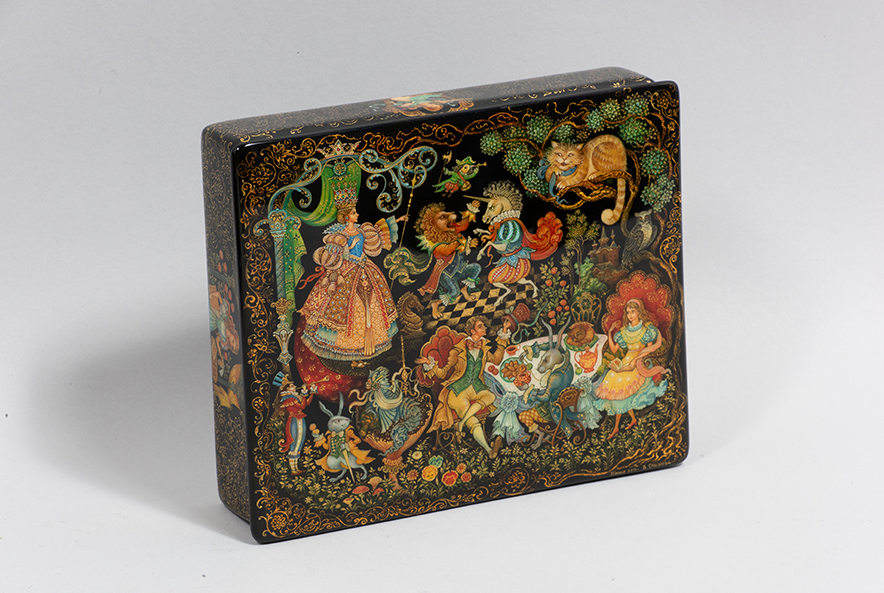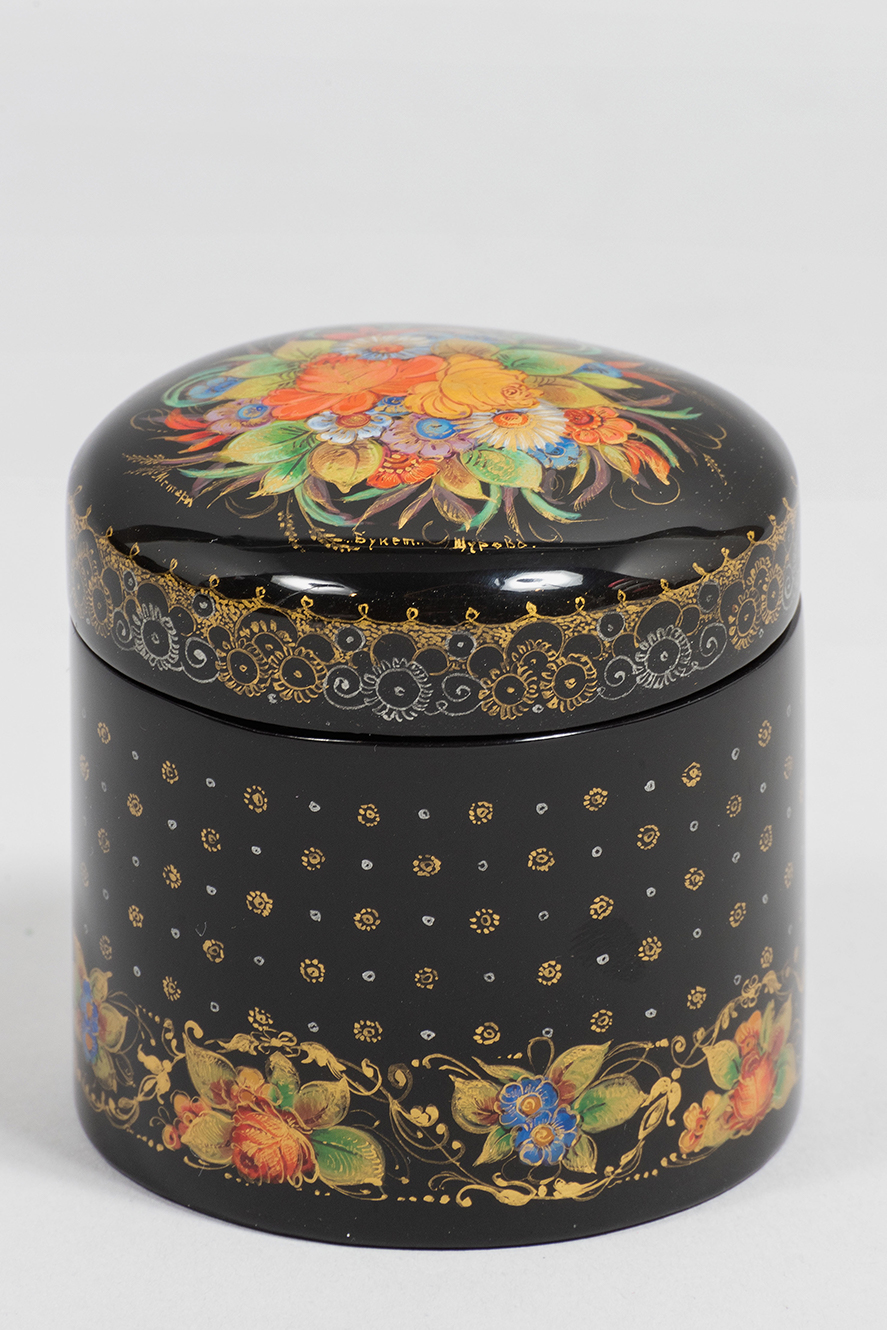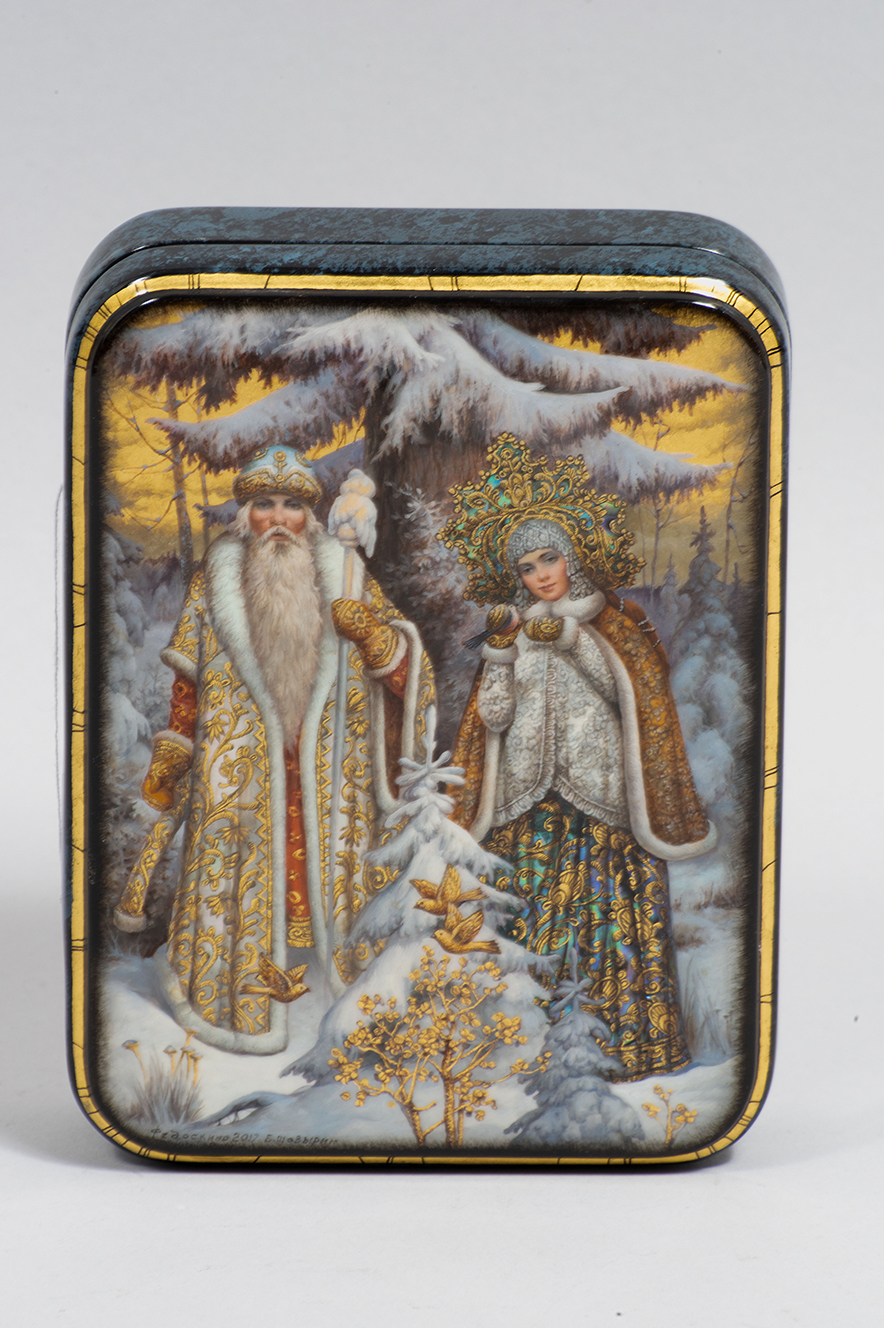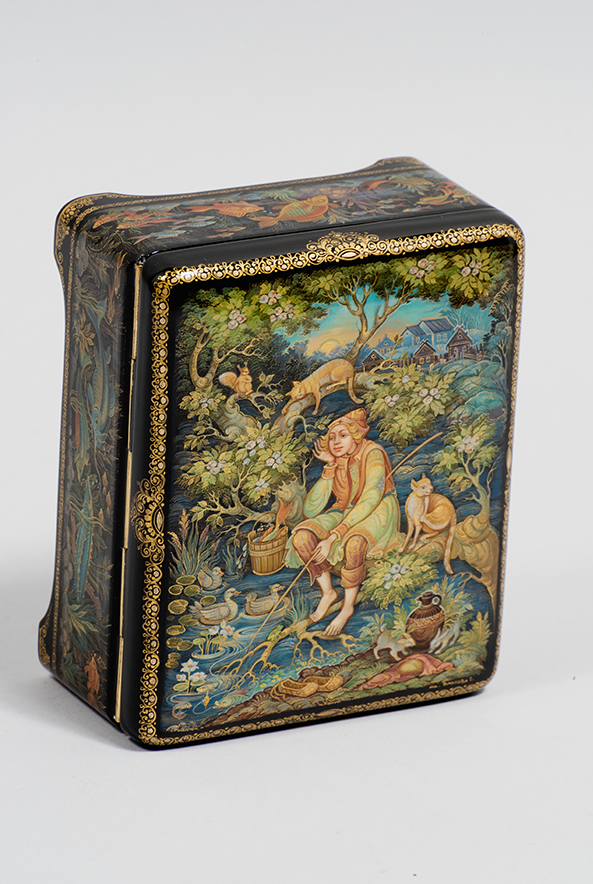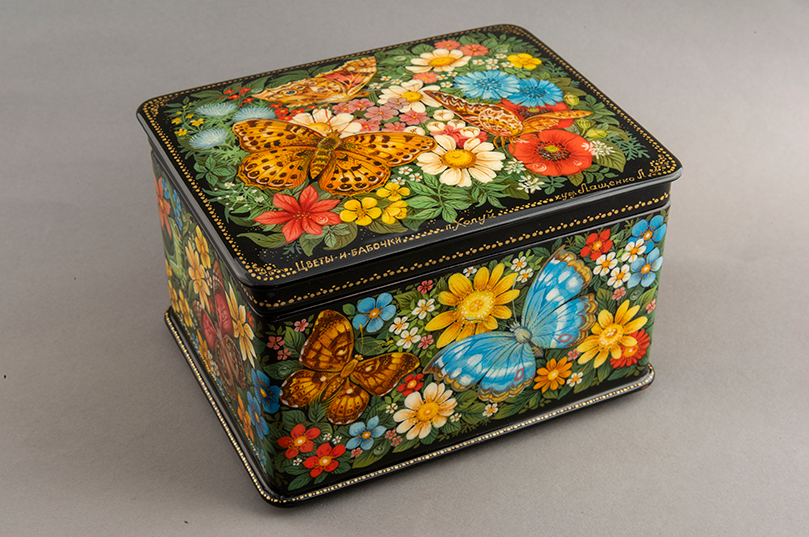The art of lacquer miniature occupies a very important place among the works of Russian arts and crafts. The most precious examples are exhibited in the State Museum, the second most important museum in Saint – Petersburg. The works by genuine masters of this craft have always attracted keen interest and attention of the people all over the world. Many artists received high government awards and honorary titles.
Pushkin Art Gallery is distinguished by a thoughtful and careful approach to the choice of all the objects for our collection of lacquer miniatures. It includes one-of-a-kind works by outstanding artists such as B. Shavyrin, O. Nechaev, B. Kiryanov, A. Zhukov, L. Slaeva, V. Chibisova, V. Smirnova.
The themes that the miniaturist paint are very diversified. Fantastic plots of Russian fairy tales, fascinating spectacles of folk festivals, scenes of Old Russian life, quite landscapes of the Russian village and the magnificent silhouettes of medieval churches adorn the items made of papier-mâché. The diversity of the plots can be explained by the great interest of the artists to the culture and life of Russia, their reverent love for the Motherland, past and present.
Our collection of lacquer miniatures includes a wide variety of masterpieces made by the artists from the for famous schools of Russian miniatures: Fedoskino, Kholui, Mstiora, Palekh.
The village of Fedoskino is considered to be the first place in Russia where lacquer miniatures started to be produced. Inspired by the easel painting, the artists of Fedoskino School created their own artistic language, very close to the Realism. It is characterised by a very detailed work on volumes and silhouettes.The artists Liliana Slaeva, Nikolai Zotov, Victor Tretyakov, Dmitriy Rogatov and many others continue the traditions of Fedoskino School.
The gallery also has a wide choice of Kholui miniatures. Evgeny Vlasov, Boris Kiryanov, Nikolai Zhukov create many masterpieces with Russian folklore scenes and epic and fabulous motifs. Each of the plots has its individual interpretation. The lacquer miniatures are painted with egg tempera which gives them the intense color. The figurative language of the Kholui miniatures dates back to the methods of Old Russian painting. However, the characters depicted on the miniatures of this school are more realistic.
The third school of Russian lacquer miniatures is Palekh. Smooth flowing lines, plastic images, harmony of colours are the main accents of this school. In the works of L. Rodionova, O. Terentyeva and V. Chibisova, some of the most famous artists of this school, reality is intricately connected with fiction: the pictures of Russian life are filled with fantastic birds and animals and fabulous flowers.
The last but not least of the 4 schools is Mstiora. Elongated silhouettes, conventional interpretation of landscapes and sophisticated colours are typical features of the school. The artists of this school maintain the tradition of ancient Russian icon painting. The works of artists retain decorative, laconic compositions and lively colours. Black color, in contrast to other schools, is used as a color and not as a background. The most popular motifs among masters of this school are peasant life, Russian fairytales and folklore.
Lacquer miniatures are great value for antique dealers, art historians and connoisseur of Russian antiquity.

